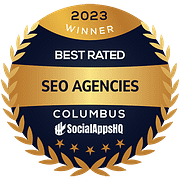
In the digital age, having a stunning website is just the beginning. To truly make your mark on the web, you need to ensure that your content is not only engaging but also optimized for search engines. That’s where SEO-friendly content comes into play. By creating content that search engines love, you can improve your website’s visibility, drive more organic traffic, and ultimately achieve your online goals.
In this guide, we’ll walk you through the steps to craft content that not only captures your audience’s attention but also ranks well on search engine results pages (SERPs).
Understand Your Audience
Understanding your audience is the first step to crafting content that truly resonates. Your audience is the heartbeat of your online presence, and catering to their needs and preferences is paramount. This involves delving into the specifics of who they are, what they seek, and how they engage with content. By gaining a deep understanding of your target demographic, you can tailor your content to not only attract their attention but also keep them engaged and coming back for more.
Before you put pen to paper (or fingers to keyboard), take the time to understand your target audience. Knowing who you’re writing for is crucial in tailoring your content to their needs and preferences. Here’s how you can do it:
- Audience Research: Use analytics tools and surveys to gather insights into your audience’s demographics, interests, and pain points.
- Create Personas: Develop buyer personas to represent your ideal customers. This helps you write content that resonates with them.
Content Structure
Imagine your content structure as the architectural blueprint of your SEO success. A well-organized and logically structured piece of content not only enhances readability but also supports search engine optimization. Clear headings and a well-defined content hierarchy guide your readers through your content, making it easier for them to grasp your message. This not only keeps your audience engaged but also helps search engines understand the significance and organization of your content.
A well-organized content structure not only makes your content more reader-friendly but also SEO-friendly:
- Headings (H1, H2, H3): Use headings to structure your content logically and improve readability.
- Content Hierarchy: Ensure a clear hierarchy, with main points and subpoints clearly defined.
Quality Content
Quality content isn’t just about impressing readers; it’s about convincing search engines that your content is valuable and trustworthy. In the digital landscape, quality is the currency of trust. Your content should not only be informative but also demonstrate expertise and reliability. By creating content that is well-researched, authoritative, and backed by credible sources, you build a solid foundation for gaining search engine favor and earning your audience’s trust.
High-quality, informative content is the cornerstone of SEO:
- E-A-T: Focus on Expertise, Authoritativeness, and Trustworthiness in your content.
- Thorough Research: Back up your claims with research and data to establish authority.
Optimized Meta Tags
Meta tags are your content’s first impression on search engines and users alike. Your title tag and meta description serve as the initial point of contact, influencing whether users click through to your content. Crafting compelling meta tags within the character limits is an art form. These tags should not only be optimized for relevant keywords but should also entice users to explore your content further.
Meta tags, including title tags and meta descriptions, play a crucial role in SEO:
- Compelling Titles: Write descriptive and compelling titles within the character limits.
- Engaging Descriptions: Create meta descriptions that entice users to click through.

Keyword Placement
Strategically placing keywords within your content is akin to leaving breadcrumbs for search engines to follow. Search engines use keywords to understand the context and relevance of your content. This begins with including your target keyword in the title, establishing the theme of your content. But it doesn’t stop there. Skillfully integrating keywords throughout your content in a natural and informative manner ensures that both readers and search engines find your content valuable.
Strategically place keywords within your content:
- Title: Include your target keyword in the title.
- Introduction: Introduce your keyword naturally in the opening paragraph.
- Body: Use keywords throughout the content, but avoid keyword stuffing.
- Conclusion: Summarize your content and include the keyword if relevant.
Content-Length Matters
Content length is not just a matter of quantity but quality. While the internet is flooded with content of varying lengths, what truly matters is the depth and completeness of your content. Each piece of content should aim to provide comprehensive information on the topic. Whether it’s a concise blog post or an extensive article, ensure that it fulfills the informational needs of your audience.
Content length can impact SEO:
- Varied Lengths: Different types of content may require different word counts. Aim for depth and completeness.
- Valuable Information: Longer content should provide substantial value to the reader.

Mobile Optimization
In a mobile-centric world, optimizing your content for smaller screens is no longer optional—it’s essential. With the majority of internet users browsing on mobile devices, mobile optimization is a critical aspect of SEO-friendly content. Responsive design ensures that your content looks and functions seamlessly on smartphones and tablets, delivering a satisfying user experience and earning search engine favor in the process.
Mobile-friendliness is a must:
- Responsive Design: Ensure your content looks and functions well on mobile devices.
- Mobile User Experience: Prioritize a seamless mobile user experience.
Internal and External Linking
Links are the bridges that connect your content to a wider web of information. Both internal and external linking serve valuable roles in SEO. Internal links guide users to related content within your website, improving navigation and encouraging further exploration. On the other hand, external links to reputable sources bolster your content’s credibility and authority, both of which are valued by search engines.
Links can improve SEO and user experience:
- Internal Links: Link to related content within your website.
- External Links: Include reputable external links when relevant.
Regular Updates
Freshness matters in the world of SEO, and regularly updating your content can breathe new life into your website’s rankings. As the digital landscape evolves, so too should your content. Outdated information can harm your SEO efforts, while regularly refreshed content keeps your website relevant and signals to search engines that you’re actively maintaining and improving your site.
Fresh content can improve rankings:
- Content Calendar: Develop a schedule for updating and refreshing older content.
- Stay Current: Keep your content up-to-date with the latest information in your niche.
Monitor and Analyze
To fine-tune your SEO strategy, you need to be your own detective, analyzing data to uncover opportunities for improvement. Tools like Google Analytics and Google Search Console provide invaluable insights into your website’s performance. By tracking keyword rankings, user behavior, and conversion rates, you can make data-driven decisions to optimize your content and enhance your SEO efforts.
Keep an eye on your SEO performance:
- Google Analytics: Track traffic, user behavior, and conversions.
- Google Search Console: Monitor keyword rankings and identify opportunities for improvement.
Putting it all together
Crafting SEO-friendly content is a blend of art and science. By understanding your audience, conducting keyword research, and following these optimization techniques, you can create content that not only resonates with your readers but also performs well in search engine rankings.
Start implementing these strategies today, and watch your website’s visibility soar. Remember, SEO is an ongoing process, so keep refining your skills and adapting to the ever-changing digital landscape.
Ready to take your website’s SEO to the next level? Contact us for professional assistance and watch your online presence flourish.







